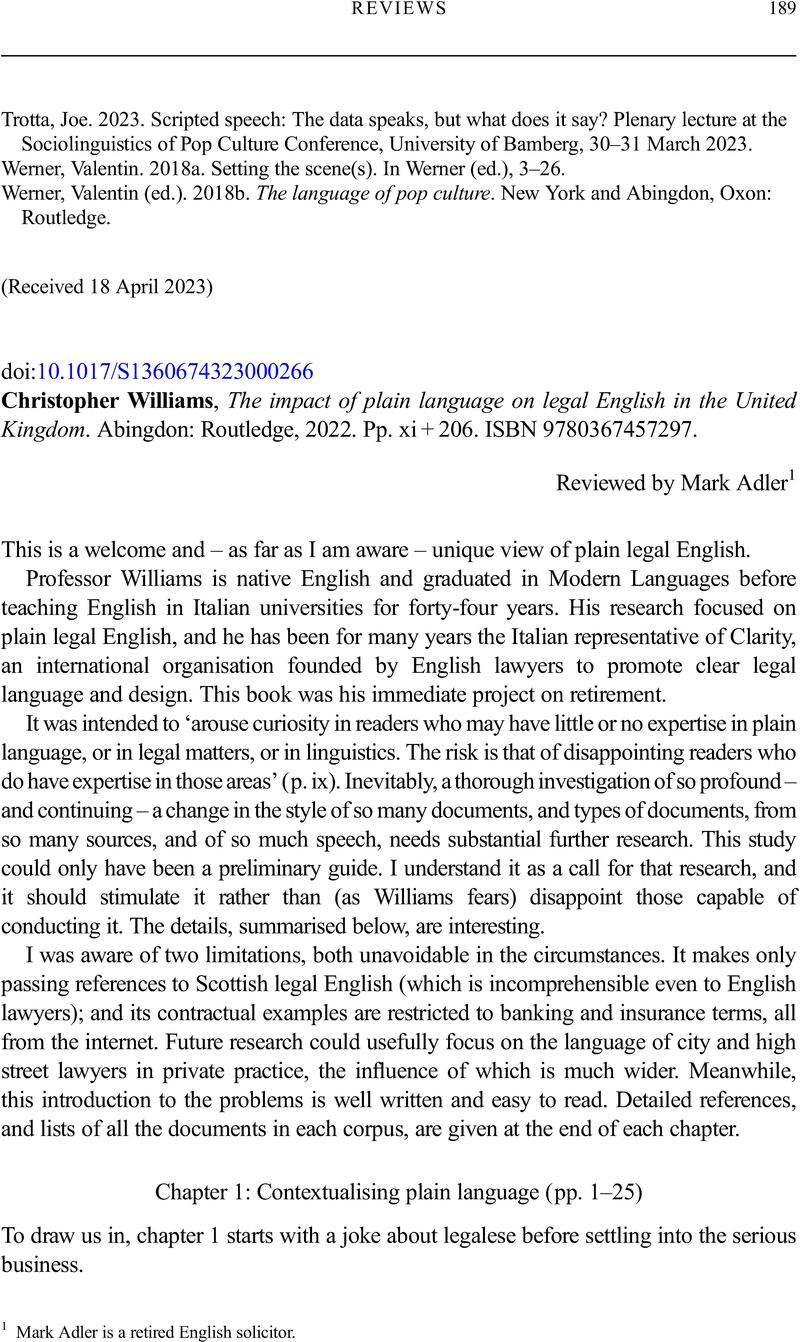No CrossRef data available.
Article contents
Christopher Williams, The impact of plain language on legal English in the United Kingdom. Abingdon: Routledge, 2022. Pp. xi + 206. ISBN 9780367457297.
Review products
Christopher Williams, The impact of plain language on legal English in the United Kingdom. Abingdon: Routledge, 2022. Pp. xi + 206. ISBN 9780367457297.
Published online by Cambridge University Press: 14 June 2023
Abstract
An abstract is not available for this content so a preview has been provided. Please use the Get access link above for information on how to access this content.

Information
- Type
- Book Review
- Information
- Copyright
- Copyright © The Author(s), 2023. Published by Cambridge University Press
Footnotes
1
Mark Adler is a retired English solicitor.
References
Adams, Kenneth. 2017. A manual of style for contract drafting, 4th edn. Chicago: ABA Publishing.Google Scholar
Crump, David. 2002. Against plain English: The case for a functional approach to legal document preparation. Rutgers Law Journal 33(3), 713–44.Google Scholar
Mattila, Heikki. 2011. Cross-references in court decisions. Lapland Law Review 1, 96–121.Google Scholar
Mattila, Heikki. 2013. Comparative legal linguistics: Language of law, Latin and modern Lingua Francas, 2nd edn, trans. Christopher Goddard. Abingdon: Routledge.Google Scholar
Parris, Rich. 2012. Online T&Cs longer than Shakespeare plays – who reads them? Which? Conversation, 23 March 2012.Google Scholar
Xanthaki, Helena. 2019. Gender-inclusive legislative drafting in English: A matter of clarity. In Flückinger, Alexandre (ed.), La rédaction administrative et législative inclusive, 57–74. Bern: Stämpfli Verlag.Google Scholar


